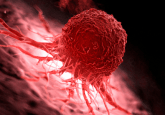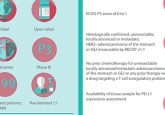Novel small molecule inhibitors of the OLIG2 transcription factor: promising new therapeutics for glioblastoma

Approximately 10,000 new cases of glioblastoma (GBM) are diagnosed each year in the USA [1]. Most treatments are palliative in nature and do not alter the prognosis for the disease [2]. As a result, the median survival time is only about 15 months [3]. Even after extensive surgery to debulk the tumor, chemotherapy and radiation, the tumors invariably recur due to residual tumor-propagating cells that have been described as glioma stem-like cells (GSCs) [4,5]. The cell of origin of the glioblastoma has never been defined, but the emerging consensus among neuro-oncologists suggests that neural stem cells, astrocytes and oligodendrocytes become mutated and these develop into brain tumor-propagating cells. Subsequent genetic and epigenetic modifications occur leading to four separate GBM subtypes: classic, mesenchymal, neural and proneural. The GSCs are a subpopulation of the bulk tumor, but with the capacity to maintain the tumor via self-renewal [6]. These GSCs are quiescent, slowly cycling and have been identified in GBM as nonapoptotic following treatment [7].
Click here to view the full article in Future Oncology.





